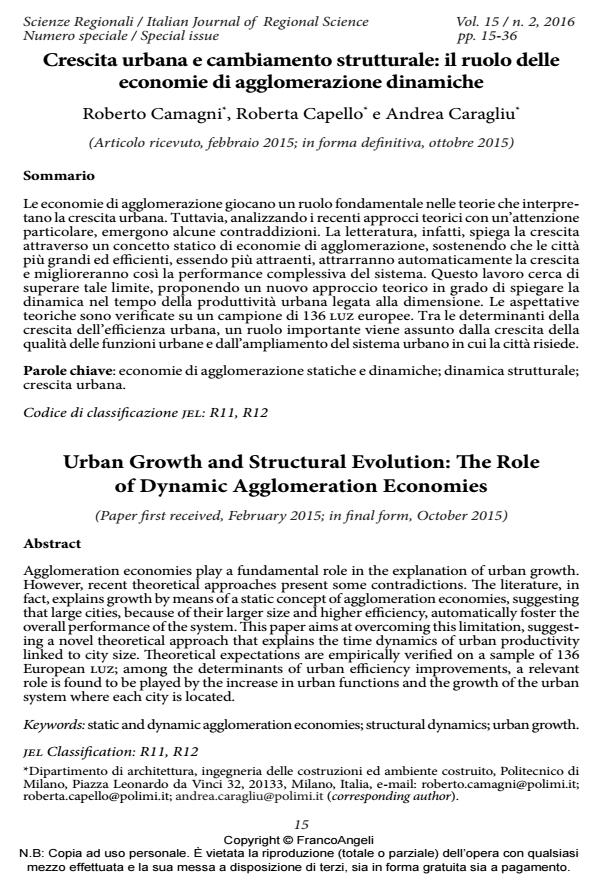Crescita urbana e cambiamento strutturale: il ruolo delle economie di agglomerazione dinamiche
Titolo Rivista SCIENZE REGIONALI
Autori/Curatori Roberto Camagni, Roberta Capello, Andrea Caragliu
Anno di pubblicazione 2016 Fascicolo 2016/2
Lingua Italiano Numero pagine 21 P. 15-35 Dimensione file 308 KB
DOI 10.3280/SCRE2016-002002
Il DOI è il codice a barre della proprietà intellettuale: per saperne di più
clicca qui
Qui sotto puoi vedere in anteprima la prima pagina di questo articolo.
Se questo articolo ti interessa, lo puoi acquistare (e scaricare in formato pdf) seguendo le facili indicazioni per acquistare il download credit. Acquista Download Credits per scaricare questo Articolo in formato PDF

FrancoAngeli è membro della Publishers International Linking Association, Inc (PILA)associazione indipendente e non profit per facilitare (attraverso i servizi tecnologici implementati da CrossRef.org) l’accesso degli studiosi ai contenuti digitali nelle pubblicazioni professionali e scientifiche
Le economie di agglomerazione giocano un ruolo fondamentale nelle teorie che interpretano la crescita urbana. Tuttavia, analizzando i recenti approcci teorici con un’attenzione particolare, emergono alcune contraddizioni. La letteratura, infatti, spiega la crescita attraverso un concetto statico di economie di agglomerazione, sostenendo che le citta piu grandi ed efficienti, essendo piu attraenti, attrarranno automaticamente la crescita e miglioreranno cosi la performance complessiva del sistema. Questo lavoro cerca di superare tale limite, proponendo un nuovo approccio teorico in grado di spiegare la dinamica nel tempo della produttivita urbana legata alla dimensione. Le aspettative teoriche sono verificate su un campione di 136 luz europee. Tra le determinanti della crescita dell’efficienza urbana, un ruolo importante viene assunto dalla crescita della qualita delle funzioni urbane e dall’ampliamento del sistema urbano in cui la citta risiede.
Parole chiave:Economie di agglomerazione statiche e dinamiche; dinamica strutturale; crescita urbana.
Jel codes:R11, R12
- De la ciudad compacta a la ciudad extensa. Procesos de urbanización recientes en áreas urbanas españolas articuladas por ciudades medias Eduardo Olazabal, Carmen Bellet, in Anales de Geografía de la Universidad Complutense /2019 pp.149
DOI: 10.5209/aguc.64681
Roberto Camagni, Roberta Capello, Andrea Caragliu, Crescita urbana e cambiamento strutturale: il ruolo delle economie di agglomerazione dinamiche in "SCIENZE REGIONALI " 2/2016, pp 15-35, DOI: 10.3280/SCRE2016-002002